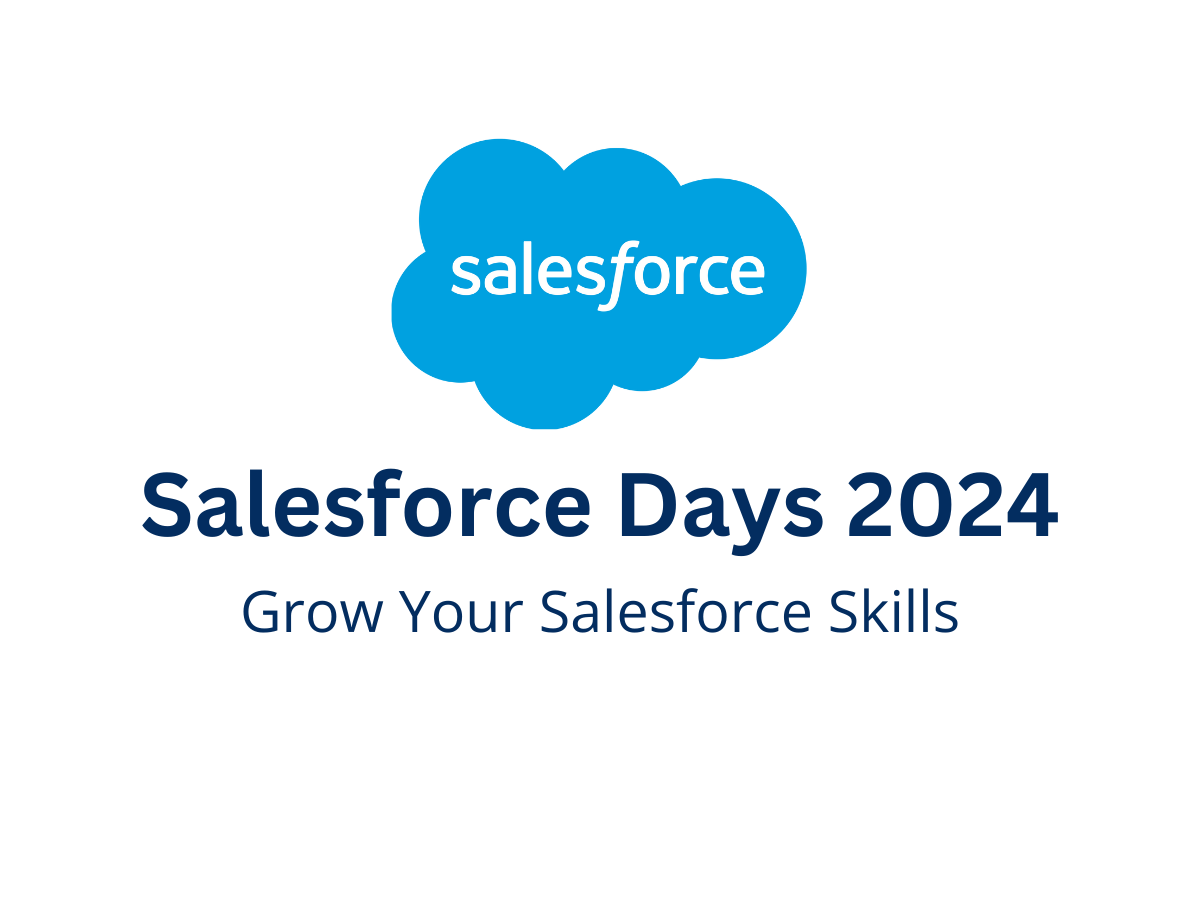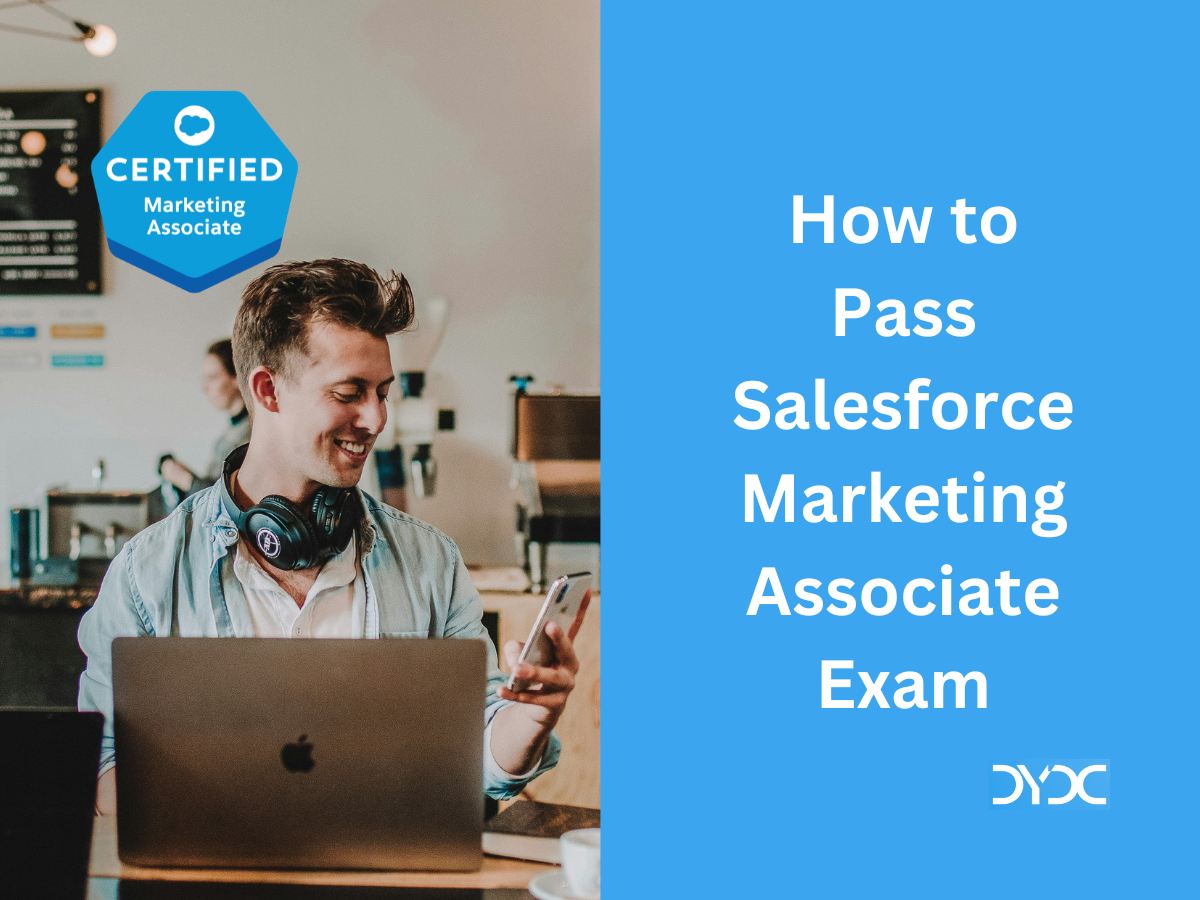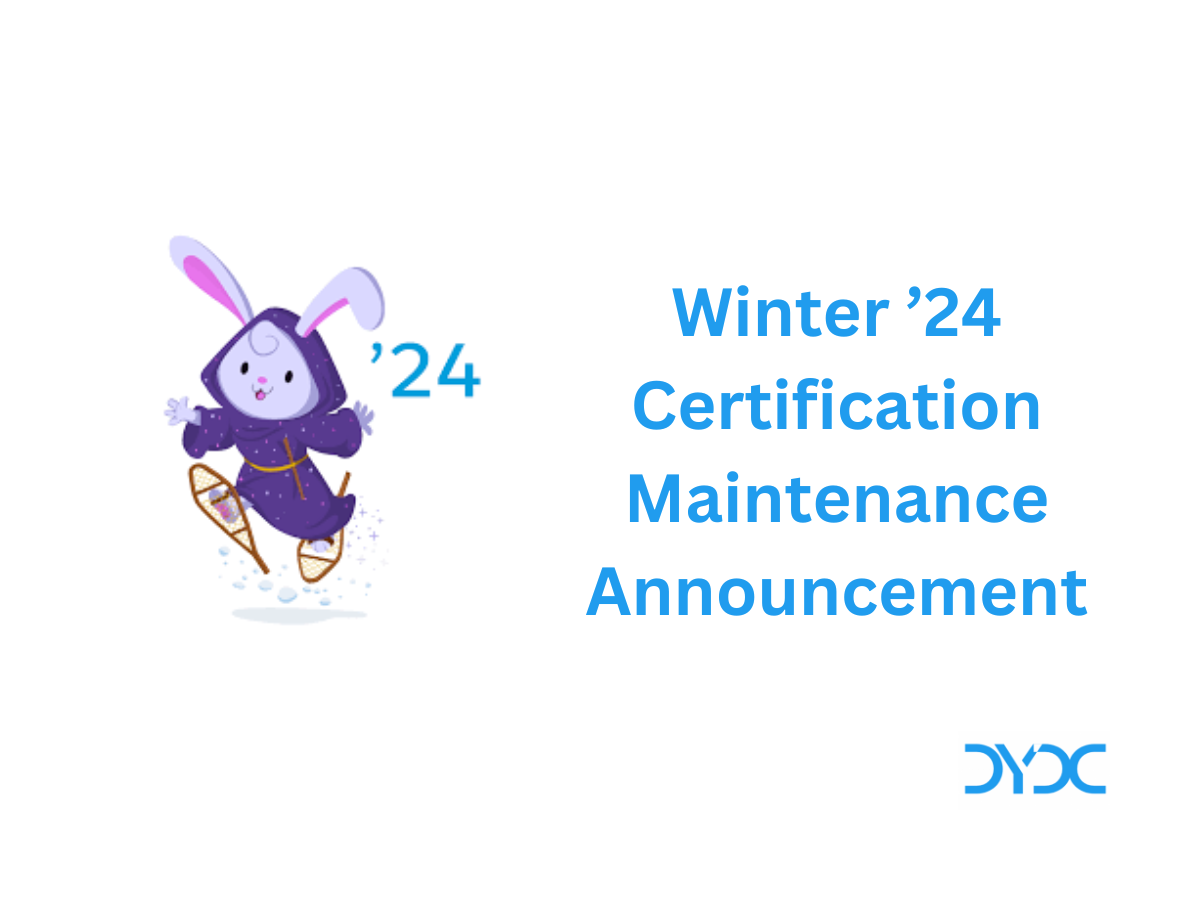Salesforce Certified B2B Solution Architect Exam Guide.
Salesforce Certified B2B Solution Architect exam covers multiple products/features such as Sales Cloud, Service Cloud, Revenue Cloud (Salesforce CPQ & Billing), Field Service, Knowledge, B2B Commerce, Pardot, Financial Services Cloud, Experience Cloud, Manufacturing Cloud, Tableau CRM, Partner Relationship Management & MuleSoft.
1. About the Salesforce Certified B2B Solution Architect Exam
Salesforce B2B Solution Architect certification is intended for individuals who have knowledge, skills, and experience architecting and driving multi-cloud B2B solutions that deliver business value for the customer.
- Content: 60 multiple-choice/multiple-select questions and 4 non-scored items
- Time allotted to complete the exam: 120 minutes (one of the highest for Salesforce exam)
- Passing score: 58% (35 out of 60 questions one of the lowest for Salesforce exam)
- Registration fee: USD 400, plus applicable taxes as required per local law
- Retake fee: USD 200, plus applicable taxes as required per local law
- Prerequisite: Salesforce Certified Application Architect Certification
- Encompasses the following pre-reqs
- Platform App Builder
- Platform Developer 1
- Data Architecture and Management Designer
- Sharing and Visibility Designer
- Encompasses the following pre-reqs
2. Exam Outline
Discovery and Customer Success: 25%
- Given a scenario in which a customer wants a B2B multi-cloud solution, document and articulate the business needs, value, and vision of the customer to support their desired business outcomes
- Given the identified business needs, vision, and current customer landscape, define the future blueprint architecture of a B2B multi-cloud Salesforce solution in order to define the product roadmap
- Given that a future blueprint architecture has been agreed upon, define the incremental steps necessary to reach the recommended future end state that supports business outcomes
Data Governance and Integration: 26%
- Given a complex data architecture, define the data flows across systems, the methods and techniques to connect systems and the relationship each system has to the data it contains
- Given the current architecture, define the strategy to migrate data, synchronize data across systems to support a multi-cloud B2B solution.
- Given existing customer personas and the defined business requirements, design and map a sharing and visibility model for a B2B multi-cloud Salesforce solution.
- Given customer expectations around data volumes, provide governance to satisfy business requirements
Design: 29%
- Given information gathered during discovery, define the functional and technical solution, in line with Salesforce standards, keeping the business value and objectives in mind.
- Given a set of business requirements, recommend an appropriate Salesforce multi-cloud or AppExchange solution.
- Given a scenario, identify design options and their associated risks, assess their level of criticality, and recommend the solution that most accurately meets the specified functional and non-functional requirements
- Given a scenario in which the design document is being shared, facilitate final acceptance from stakeholders by ensuring any concerns raised are adequately addressed
- Given a defined future state B2B multi-cloud solution architecture alongside business requirements, choose the preferred method for integrating data across different clouds.
Delivery: 12%
- When planning a B2B multi-cloud set of orgs and environments, define appropriate strategies that balance resources and effort to deliver an effective and efficient delivery method
- When planning the steps involved in delivering a customer’s business outcomes, ensure that there is a clear understanding from business requirements through to the delivered configuration
- Given a scenario in which the designed solution is being implemented, provide the appropriate display of the capabilities of that solution to stakeholders (demos) that demonstrate continued alignment with the desired business outcomes and priorities
Operationalize the Solution: 8%
- Given that a solution has been implemented, ensure that stakeholders are appropriately enabled to manage the solution moving forward (e.g., updating documentation, center of excellence, training)
- Given a scenario in which a B2B multi-cloud solution has been implemented, determine how to further improve the solution to ensure business benefits are continuously realized
- Determine how to facilitate adoption in order for the business to benefit from a B2B multi-cloud solution
3. Exam Guide
4. B2B Solution Architect Certification Trail
5. B2B Solution Architect Certification Trailmix
6. Important Topics for the B2B Solution Architect Exam
6.1 Discovery and Customer Success: 25% (15 Questions)
- Customer Centric Discovery Steps
- Know your customer – get to know your customer’s industry and business
- Be your customer – take a walk in your customer’s shoes
- Connect with your customer – share your insights with your customer
- Create with your customer – develop a strategy with your customer
- Three ways to conduct discovery
- Embodying – live the experience
- Shadowing – observe along the customer and ask questions
- Interviewing – direct interviews to hear customer experiences
- Four stages for using the guides to deliver cross-cloud B2B solutions
- Get Started – define business goal
- Assess your Needs – leveraging industry blueprints and reference architectures
- Map your Goals – with B2B domain business scenarios
- Deliver Solutions – leveraging Salesforce’s Solution Kits
- Business Scenarios – provide best practices for successfully implementing Salesforce products and their respective solutions. They contain:
- Recommended Products
- Solutions
- Business Capabilities
- Sub-Capabilities
- B2B Customer Relationships
- B2B Business Models
- B2B
- B2B2C
- B2C2B
- B2B and B2C Combines
- Role of a Solution Architect
- Business leadership: They guide companies on a multi-cloud solution journey for meaningful customer experiences.
- Delivery leadership: They drive successful multi-cloud implementations on the Customer 360 platform using best practices based on use-case delivery knowledge and experience.
- Technical leadership: They provide technical expertise by selecting the multi-cloud product features that best align with a company’s vision and business value goals.
- Steps to Successful Digital Transformation
- Evolve
- Adapt
- Transform
- Capability Readiness Model
- Unstructured
- Disciplined
- Repeatable
- Buyer Centric
- Customer Driven
- Capabilities to plan for transformation
- Journey Mapping
- Business Process Mapping
- Business Analyst
- Architecture Diagram
- Core tenets of digital transformation
- People
- Process
- Technology
- Salesforce recommends using the LEVERS model to drive change management
- Leadership
- Ecosystem
- Values
- Enablement
- Rewards
- Structure
6.2 Data Governance and Integration: 26% (15 Questions)
- B2B System Integration
- B2B Core Features
- Systems of Engagement Framework
- System of Record – ERP, CRM
- System of Reference – Process Automation, Data Warehouse
- System of Intelligence – Machine Learning, Analytics
- System of Engagement – Sales Cloud, Service Cloud, Communities
- B2B Commerce on Lightning Experience key features
- Lightning Commerce Template – Easily set up and deploy commerce storefronts
- Lightning Internal Storefront Administrator UI – Manage and support commerce storefronts
- Digital Experience Platform – Create personalized shopping experiences
- Consumer-like search – B2B Commerce search uses the best-in-class technology from B2C Commerce
- Experience Builder for B2B Commerce – Quickly and easily build storefronts with drag-and-drop components
- Standard Objects for B2B Commerce – B2B Commerce objects, such as the cart, product, and category objects, are uniform across Salesforce
- You do not incur a CMS content record limit if you’re using images via external URLs with B2B Product Media
- System of Record for B2B Commerce Implementation
- Migrate data and synchronize data across systems to support a multi-cloud B2B solution
- Multi-Org Architecture Models
- Hub and Spoke Model
- PubSub / ESB Mode
- Organic / Chainlink / Point to Point Model
- Multi-Org Patterns
- Salesforce Connect
- Event Bus
- Middleware (Mulesoft)
- Data Hub (Heroku)
- Muti-Org Technologies
- Data Synchronization
- REST API
- Salesforce Connect
- Heroku Connect
- Event Driven Architecture
- Platform Events
- External Services
- Change Data Capture
- Data Orchestration Platforms
- MuleSoft
- Informatica
- Jitterbit
- Dell Boomi
- Data Synchronization
- Multi-Org Security Summary app lets you analyze and manage security across all of your Salesforce Orgs
- Recommend source of truth for Product & Pricing information is a given Multi-Cloud Use Case – Is it Revenue Cloud (Salesforce CPQ)?
- Large Data Volumes
- You can query and process up to 50 million records using Batch Apex
- A bulk query can retrieve up to 15 GB of data, divided into fifteen 1 GB files
- If the Bulk Query doesn’t execute within the standard two-minute timeout limit, the job fails and a QUERY_TIMEOUT error is returned
- Use PK Chunking header to split the bulk query results into smaller chunks
- Three Types of Data Skew
- Account Data Skew
- Ownership Skew
- Lookup Skew

6.3 Design: 29% (18 Questions)
- Recommend no code vs low code solutions for a give Multi-Cloud Use Case
- Recommended sequence of implementation of different products in a Multi-Cloud Use Case.
- B2B Product Fundamentals
- Einstein Bots
- Einstein Next Best Action
- Asynchronous Apex
- Field Service Lifecycle
- Field Service Preventive Maintenance
- Multi-Cloud Asset Lifecycle Management
- Quote > Order > Work Order > Locations -> Replenish
- What is an Asset? – Whatever can be sold in Salesforce as a product can is an asset
- Salesforce Integration Patterns for B2B multi-cloud use case
- Benefits of API led Integration – API led connectivity is a methodical way to connect applications, data, and devices through reusable and purposeful APIs instead of point-to-point integration. Some of the key benefits of API-led connectivity are:
- Clear contracts between systems
- Reusability
- Discoverability
- Visibility and security
- Availability and resiliency
- MuleSoft Accelerators for Commerce Cloud
- Given a scenario recommend appropriate Salesforce License Type
- Given a Multi-Cloud Use Case recommend appropriate Experience Cloud License
- Multi-Cloud Product and Pricing Management
- Multi-Cloud Enterprise Content Management
- Multi-Cloud B2B Sales Forecasting
- Product and Price Syncing
- There are three Channel Options to consider when integrating Revenue Cloud and B2B Commerce
- Separate Channel
- Connected Channel
- Blended Channel (Recommended Option)
- Revenue Cloud and B2B Commerce Connector
- Available as an unmanaged package on Salesforce Labs
- Supports two methods for converting commerce carts to CPQ Quotes:
- Basic method – initiated from the cart page and directly creates a CPQ quote from the buyer cart.
- Advanced method – pushes the buyer to proceed through a portion of the checkout flow where they can select their address, shipping method, etc. in the checkout flow prior to the creation of the CPQ quote
- Elements not supported by Revenue Cloud and B2B Commerce Connector
- Contract Management
- Tiered Pricing
- Complex Product Bundles
- If ERP is the product and pricing master, all product and pricing info needs to be synced to Salesforce CPQ and the connector is expected to push the data to B2B Commerce
- B2B Commerce shouldn’t be directly integrating with the ERP, as the functionality supported in the connector assume CPQ to be the source for publishing data to B2B Commerce
- If the ERP is the target application for downstream order fulfillment, the CPQ Order object should be utilized as the exit and entry point from and to Salesforce.
- Cart to Quote
- Opportunity and CPQ Objects should not be owned by community user
- Cart to Cash
- If an external Tax engine like Avalara, Vertex, Sabrix, etc is used, then both B2B and Billing should have integrations with the Tax engine to avoid any discrepancies
- Orders is the intersection object between the CPQ package and Salesforce billing
- Cart to Agreement
- Quote object is the key connecting point between B2B and CPQ that flows to Manufacturing Cloud
- Salesforce Manufacturing Cloud brings sales and operations teams together around a unified view of market and customer demands to more accurately forecast, plan, and drive predictable business performance
- Revenue Cloud Revenue Models
- One-Time Sales
- Subscriptions
- Usage-Based Pricing
- Configurable Bundles
- Professional Services
- Assets consumed are customer-owned where as Stock consumed is company-owned
- Linking product consumed records to product items ensures tracking of the entire lifecycle of items in inventory, including their storage, transfer, and consumption. Leaving the product item blank and specifying a pricebook entry will only track consumption
- In order for the inventory management data to flow from field service to sales-related products, you need to associate products consumed with pricebook entries. This allows those pricebook entries to be mapped to either opportunity line items or quote line items.
- Field Service Management Product Pillars
- Mobile – Mobile App, Flows
- Resource – Scheduling, Dispatch
- Asset – Inventory Management, Maintenance Plans
- Foundation – Work Order Management, Work Types
- Asset 360 is a package built by ServiceMax on top of Salesforce Field Service. Asset 360 benefits:
- Complete visibility into install base, service contracts, and asset performance
- Maximize equipment uptime
- Reduce maintenance costs
- Adopt outcome-based service models
- Service Cloud for Salesforce CPQ Integration Package
- a managed package that provides Sales Contract features to Service Cloud users
- replaces Contracts with Service Contracts and Subscriptions with Service Contract Line Items
- provide a bridge for the Sales to Service handoff using Service Contracts
- Configuration to Installation Flow (Quote-to-Order-to-Installation)
- Quote -> Oder -> Service Contract -> Work Order -> Service Appointment
- CPQ and FSL Considerations
- The Quoting interface is made of CPQ Visualforce pages and not available in FSL Mobile
- Product and Pricing Rules are not preserved in FSL
- A bill of materials (BOM) is a comprehensive inventory of the raw materials, assemblies, subassemblies, parts, and components, as well as the quantities of each, needed to manufacture a product
- ERP in B2B Customer 360
- Direct Sales Teams utilizes two products: Sales Cloud and Revenue Cloud
- Indirect Sales Teams utilizes two products: PRM and B2B Commerce
- Synchronize Order, Invoice and Product information from ERP to Salesforce
- Salesforce should be your source of record for Customer Hierarchies
- Salesforce should remain the master source for contact data
- Salesforce as a System of Engagement and ERP as a System of Record/Reference
- Warranty data can be stored in a Custom Object attached to Assets within Salesforce
- Quote Object is the trigger to send information from CPQ to ERP
6.4 Delivery: 12% (7 Questions)
- Atlassian Agile Basics
- Agile teams go through four key phases as they develop
- Forming
- Storming
- Norming
- Performing
- Three Product Phases
- Make
- Sell
- Operate
- Agile Ceremonies
- Sprint Planning
- Daily Standup
- Iteration Review
- Retrospective
- Key stakeholder and deliverables of discovery sessions
- Salesforce Release Readiness Strategies
- Pardot
- B2B Marketing has more informational content that’s driven by decisions based on bottom-line revenue impact
- B2B Marketing
- For direct sales (sales team selling directly to accounts within the B2B context) use cases use Sales Cloud
- For indirect sales (B2B buyers coming in through a commerce tool) use cases use B2B Commerce
- Demo a solution
6.5 Operationalize the Solution: 8% (5 Questions)
- User Training
- Create a Communication Plan
- Pre-Launch
- Launch
- Post Launch
- Training Plan
- Identify your audience
- Determine Training Scenarios
- Define a Training Plan
- Training Program can consist of
- Learning Paths
- In-App Guidance
- Trailhead App for Slack
- Help Menu
- User Adoption
- Salesforce Center of Excellence Benefits
- Prioritize Across Teams – requirements are balanced against available timelines and resources
- Streamline Processes – select best practices from across multiple teams
- Plan for Growth – scalable solutions
- Reduce Risk – decisions are made across wide range of opinions and approaches
7. Other Useful Resources
- B2B Solution Architect Training in Partner Learning Camp. (Available only to Salesforce partners. Complete the course before Nov 30, 2021 to be eligible for $400 B2B Solution Architect Certification Voucher)
- Not a Partner? You can access PLC content through the official B2B Solution Architect Trailhead Help article.
I hope you find this guide useful for Salesforce Certified B2B Solution Architect exam preparation. Feel free to share this article on social media and tag me in your post!









I just took the test and there are no terminologies on the entire test. There was no pick which value goes with which “phases” or anything like that. The test was all scenarios and quite wordy. I think people can ignore memorizing any terms, enumerations, etc and just focus on what is CPQ, B2B Commerce, Sales Cloud, Service Cloud, ERP and how they can connect to one another. Don’t spend your time memorizing phrases because that is not there.
Hi Diana,
Thank for your valuable feedback, it will be very useful for people preparing for the exam. The important topics mentioned in this article are my notes when I was going through the PLC course and certification trailmix before attempting the exam. I did find the exam easier to pass than what impression I had during my preparation.
Notes here were very helpful and helped me pass the exam. Thank you!
Thank you John! I am glad you found my notes helpful!
Thanks a lot Dinesh. I passed the exam just by going through your Post. Best post ever.
Thank you Vinodh! I am glad that the you found my notes useful.